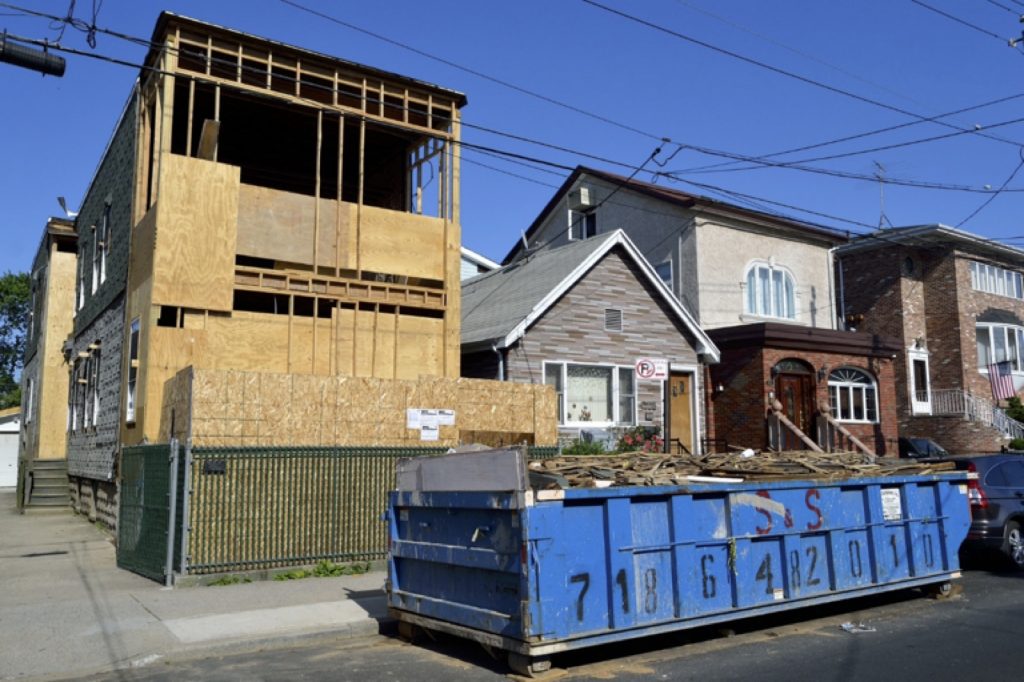Maximizing Efficiency with a 40-Yard Dumpster for Large-Scale Construction Projects
Large-scale construction projects can be complex undertakings that require meticulous planning and efficient execution. One crucial aspect of these projects is waste management. The debris generated from construction, demolition, and remodeling can be overwhelming.

https://www.pexels.com/photo/workers-constructing-the-wooden-floor-of-a-house-4135926/
A 40-yard dumpster is an invaluable tool for managing this waste effectively. This article will explore the benefits of using a 40-yard dumpster for large-scale construction projects and provide practical tips on maximizing its efficiency. For detailed information, read on for some essential 40-yard dumpster insights.
Ordinary Wastes a 40-Yard Dumpster Can Handle
A 40-yard dumpster is one of the largest sizes that can be hired, and therefore, it is suitable for large construction projects. It can also accept bulky quantities of waste, which is particularly useful in construction sites where lots of debris is produced. This ability eliminates the need to have several tiny dumpsters on site, which may be inconspicuous and challenging to organize.
Therefore, the 40-yard dumpster is one of the most useful as it can accommodate different types of waste. Construction sites usually produce various waste, such as wood, metallic, concrete, etc. Due to the large size of the 40-yard dumpster, all these materials would be dumped at once, making it easier to dispose of the trash.
In addition, renting and using a single large dumpster can be more economical than making usual multiple trips to a disposal facility. Although it is possible to rent a 40-yard dumpster at a relatively higher initial price than that of a smaller dumpster, the amount of time and money saved from fewer pickups and deliveries can help recover such costs. A smaller number of dumpsters makes it possible to have less time spent in organizing to get the dumpsters, which causes fewer interferences with the working process.
Efficient Loading and Waste Segregation
Optimizing the 40-yard dumpster requires planning and proper arrangements and procedures when filling it. Effective waste management entails ensuring that there is a clear understanding of the nature of waste that is expected to be produced, and this should be communicated to the crew. Source segregation of wastes is efficient in the disposal of wastes, and it should be practiced properly.
For instance, segregating recyclable and non-recyclable products can help ease the recycling process and simplify the amount of waste that must be disposed of, primarily by creating landfills. This can be done by partitioning certain parts of the dumpster for specific types of materials to be disposed of, which can be helpful in this case. This not only helps in waste management but also supports the concept of environmental sustainability.
One of the other essential tasks is loading the dumpster. First, the massive and voluminous objects should be placed based on the pile. This gives a more stable structure and helpful utilization of the space at the bottom for more extensive and heavy items, while the top can accommodate more of the lighter content. A tip regarding the dumpster is to fill it appropriately since this leads to several issues, such as safety concerns and fines from waste management services.
Strategic Placement and Site Management
Another factor that contributes to the efficiency of the whole situation is the location of the dumpster on the construction site. In an ideal world, the location of the dumpster should be an area that many laborers will be able to reach but not an area that hinders movement or productivity. About the location, one has to consider the site plan’s organization and the materials’ traffic.
These efforts would require timely and frequent communication with the waste management company. The last thing you would like is a delay in pickups and replacements, so ensure you schedule them in advance. Specific schedules should be established to ensure that the site is clean and that waste is manageable. Also, periodically developing a plan to follow in case of more waste than usual can effectively avoid such hitches.
The other important aspect is training the crew in proper disposal practices. Awareness of those guidelines, supplemented with posters or repeated reminders, can help guarantee that all site users follow the waste management plan. Some of the knowledge and information that must be acquired include the type of material allowed into the dumpsters and safety measures to be observed.
Conclusion
Therefore, it is evident that a 40-yard dumpster is a valuable resource for construction companies and contractors who carry out extensive construction work as it provides enough space to collect different types of waste and contributes to reasonable expenses and effective waste removal. Thus, construction managers may want to know the benefits of loading, segregation, and placement practices in enhancing the efficiency of waste disposal.
Proper planning and communication are necessary to guarantee that the use of a 40-yard dumpster will improve productivity and project achievement. Accepting these practices not only enhances the results of site management tasks but also aids the efforts to promote environmental sustainability at construction sites, which, in turn, becomes the successful combination for any large construction project.

